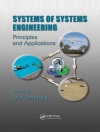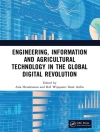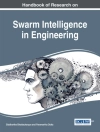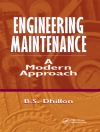- Assesses key developments in sensor technology to improve monitoring and management of complex agricultural systems
- Considers the growing influence of proximal crop sensors in assessing, monitoring and measuring the health of agricultural soils
- Explores the potential of remote and aerial sensing towards achieving sustainable crop production through more targeted irrigation management, site-specific nutrient management and weed management
Table des matières
Part 1 Advances in remote sensing technologies
- 1.Advances in remote/aerial sensing of crop water status: Wenxuan Guo, Texas Tech University and Texas A&M Agri Life Research, USA; and Haibin Gu, Bishnu Ghimire and Oluwatola Adedeji, Texas Tech University, USA;
- 2.Advances in remote sensing technologies for assessing crop health: Michael Schirrmann, Leibniz Institute for Agricultural Engineering and Bioeconomy, Germany;
- 3.Advances in remote/aerial sensing techniques for monitoring soil health: Jeffrey P. Walker and Nan Ye, Monash University, Australia; and Liujun Zhu, Monash University, Australia and Yangtze Institute for Conservation and Development, Hohai University, China;
Part 2 Advances in proximal sensing technologies
- 4.Advances in using proximal spectroscopic sensors to assess soil health: Kenneth A. Sudduth and Kristen S. Veum, USDA-ARS, USA;
- 5.Advances in using proximal ground penetrating radar sensors to assess soil health: Katherine Grote, Missouri University of Science and Technology, USA;
- 6.Using proximal electromagnetic/electrical resistivity/electrical sensors to assess soil health: Alain Tabbagh, Sorbonne Université, EPHE, UMR7619, Métis, 4 place Jussieu 75252 Paris CEDEX 05, France; and Seger Maud and Cousin Isabelle, INRAE, Centre Val de Loire, UR0272 SOLS, 2163 Avenue de la Pomme de Pin, CS40001 Ardon, F-45075 Orléans Cedex 2, France;
- 7.Using ground-penetrating radar to map agricultural subsurface drainage systems for economic and environmental benefit: Barry Allred, USDA-ARS – Soil Drainage Research Unit, USA; and Triven Koganti, Aarhus University, Denmark;
Part 3 Advances in sensor data analytics
- 8.Advances in machine vision technologies for the measurement of soil texture, structure and topography: Jean-Marc Gilliot, Agro Paris Tech Paris Saclay University, France; and Ophélie Sauzet, University of Applied Sciences of Western Switzerland, The Geneva Institute of Technology, Architecture and Landscape (HEPIA), Soils and Substrates Group, Institute Land-Nature-Environment (in TNE Institute), Switzerland;
- 9.Using machine learning to identify and diagnose crop disease: Megan Long, John Innes Centre, UK;
- 10.Advances in proximal sensor fusion and multi-sensor platforms for improved crop management: David W. Franzen and Anne M. Denton, North Dakota State University, USA;
- 11.Using remote and proximal sensor data in precision agriculture applications: Luciano S. Shiratsuchi and Franciele M. Carneiro, Louisiana State University, USA; Francielle M. Ferreira, São Paulo State University (UNESP), Brazil; Phillip Lanza and Fagner A. Rontani, Louisiana State University, USA; Armando L. Brito Filho, São Paulo State University (UNESP), Brazil; Getúlio F. Seben Junior, State University of Mato Grosso (UNEMAT), Brazil; Ziany N. Brandao, Brazilian Agricultural Research Corporation (EMBRAPA), Brazil; Carlos A. Silva Junior, State University of Mato Grosso (UNEMAT), Brazil; Paulo E. Teodoro, Federal University of Mato Grosso do Sul (UFMS), Brazil; and Syam Dodla, Louisiana State University, USA;
A propos de l’auteur
Barry Allred is a Research Agricultural Engineer with the U.S. Department of Agriculture (USDA) – Agricultural Research Service (ARS) – Soil Drainage Research Unit in Columbus, Ohio. He developed the concept and served as principal editor for the first book devoted to the topic of applying near-surface geophysical methods to agriculture (Handbook of Agricultural Geophysics – CRC Press). He has been active in the Environmental and Engineering Geophysical Society; serving as President, Vice-President Committees, Editor-in-Chief of the Fast TIMES news magazine, a virtual symposium lead coordinator, organizing two of the society’s conference workshops, and chairing several SAGEEP technical sessions.












